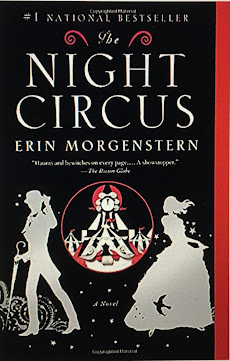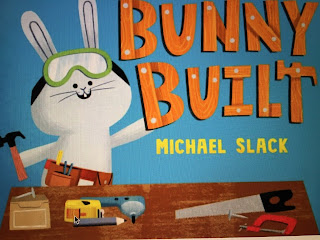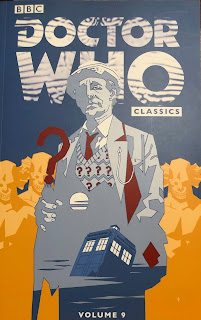All for One and One for All: Musketeers Don't Die, They Just Adapt.
Writers are often asked where they find their inspiration, but the truth is no one really knows just how an idea is born. Often enough, inspiration can come from some already existing story. A favorite book, a fairytale, even a fading memory can give a writer fodder for a story, a project, a novel. If that favorite book has inspired decades and generations of writers, a writer may not be able to resist having a go themselves. Adapting a book into a movie, a movie into a TV series, a TV series into a book, into a game, into a song, a poem—the imagination of any creative person can take a leap into a beloved world, or create a new one from a suggestion in a pre-existing one.
Sometimes one piece of literature can inspire thousands of adaptations. Case in point, The Three Musketeers by Alexandre Dumas.
I first read the classic novel when I was about ten years old. I was captivated and more than a little surprised about how—well—how not boring it was. I’d assumed anything called a ‘classic’ would be hard to understand and slow. Instead, I found it witty, clever, and captivating.
Originally written in serial form in 1844 by Alexandre Dumas, The Three Musketeers has been adapted and readapted and reimagined ever since. As part of a series of books called The D’Artagnan Romances, The Three Musketeers introduces the characters and sets up the adventure. Full of intrigue and sword fights, it may romanticize war a bit too much, but it’s the characters that keep me enchanted.
Books in the series are:
The Three Musketeers
Twenty Years After
The Vicomte de Bragelonne
The last book in the list was often divided into three or four volumes:
The Vicomte de Bragelonne
Ten Years Later
Louise de la Vallière
The Man in the Iron Mask
I couldn’t say what I loved the most—perhaps it’s the convention of the times (one shared with one of my other favorite authors, Charles Dickens) where the author addresses the reader, a move that reminded me of “breaking the fourth wall” when an actor in a play, TV show, or film turns to the audience and with either a look or a word, acknowledges the fiction of their own story. I know that’s not what these authors were doing. The narrator admits to relating the story but not that the story is fiction.
The Three Musketeers opens with D’Artagnan’s arrival in Paris, whereupon he arranges three duels with each of three musketeers, who he later learns are the best of friends. Soon, he’s joined their group, and we follow the four as they deal with palace intrigues, murder, and war. Their loyalty to the crown, and their irritation with Cardinal Richelieu are legendary, as is the depth of their friendships and loyalties to each other.
Remembered in the battlecry “All for one, and one for all,” their loyalty is tested throughout the series.
Adaptations of the book include Italian, French, Russian, and U.S. versions as well as films featuring “descendants” of the Musketeers, and a 2011 version with Orlando Bloom of Lord of the Rings fame as the Duke of Buckingham.
The 1948 version starring Gene Kelly as D’Artagnan, Lana Turner as Milady de Winter, Angela Lansbury as Queen Anne, and Vincent Price as Cardinal Richelieu is thoroughly enjoyable, though a bit more lighthearted than some versions.
Even Star Trek got into the act with a scene from the first season episode “The Naked Time” featuring Lt. Sulu (George Takei) running around the Enterprise for all the world behaving like a musketeer and challenging people to duels.
Most recently, France has announced an adaptation that’s now in pre-production. Splitting the story into two films (something also done to great affect in 1973 with Richard Lester’s adaptation) The Three Musketeers - D’Artagnan and The Three Musketeers - Milady, will be filmed back-to-back with each focusing on its titular character.
The new films will also be introducing a new character. Named Hannibal, the character is based on the first black musketeer in French history, Louis Anniaba.
With that announcement, it’s hard not to look back on what filmmakers have made of the classic story in the past. With a new adaptation is released about every ten years, there’s no shortage of films to consider.
I’ve heard that Lester wanted the Beatles to star in the film, and I’ve considered that delicious factoid again and again over, but I doubt that even if the producers had agreed, that they would have persuaded the Beatles to do the film. The film was released in 1973. The Beatles had broken up by 1970.
Still, that bit of trivia doesn’t compete with the eventual cast. Perennial stars like Christopher Lee, Charlton Heston, Faye Dunaway, Richard Chamberlain, Oliver Reed, Roy Kinnear, and of course, Michael York as D’Artagnan.
The two films were meant to be one, but it was far too long, and so they became: The Three Musketeers: The Queen’s Diamonds, and The Four Musketeers: Milady’s Revenge.
The 1993 Disney version of the film was far less laudable. In fact, I found it hard to watch. Cringe-worthy in the extreme, it seems half-hearted, full of too many obvious jokes, and in short not worth watching.
Disney had also done a previous version with Mickey, Donald, and Goofy as the musketeers.
Another cartoon version featured, and I can’t believe I’m typing this, Barbie.
In 2004, another series, La Femme Musketeer, starred Gerard Depardieu as Cardinal Mazarin, John Rhys-Davies as Porthos, Michael York reprising his role as D’Artagnan, and Nastassja Kinski as D’Artagnan’s daughter.
With versions dating back to no fewer than 6 silent films and even a Hanna-Barberra 1968 cartoon series, the strange and varied past gives us some idea of the future the tale will enjoy.
That’s not where the adaptations end.
There was a musical version of the story with a book byWilliam Anthony McGuire, lyrics by Clifford Grey andP.G. Wodehouse, and music by Rudolf Frimi. There’s also a Dutch musical and a Russian musical.
The books have also inspired yet more books. Author Steven Brust has written the Khaavren Romances, partly in homage to The Three Musketeers. The first in the series is The Phoenix Guards, and all are set in Dragaera, the world Brust created for his Vlad Taltos series.
The titles of the books in the Khaavren Romances mirror those of The D’Artagnan Romances:
The Phoenix Guards
Five Hundred Years After
The Viscount of Adrilankha
The Paths of the Dead
The Lord of Castle Black
Seth Lavode
The Baron of Magister Valley
It seems the tale has become woven into our collective consciousness. Indeed, it’s unusual for a decade to go by without some new reimagining of the tale. After 177 years, Dumas’s work has not diminished, nor will it so long as writers, artists, and other creative types continue to find inspiration within its pages.










Comments
Post a Comment